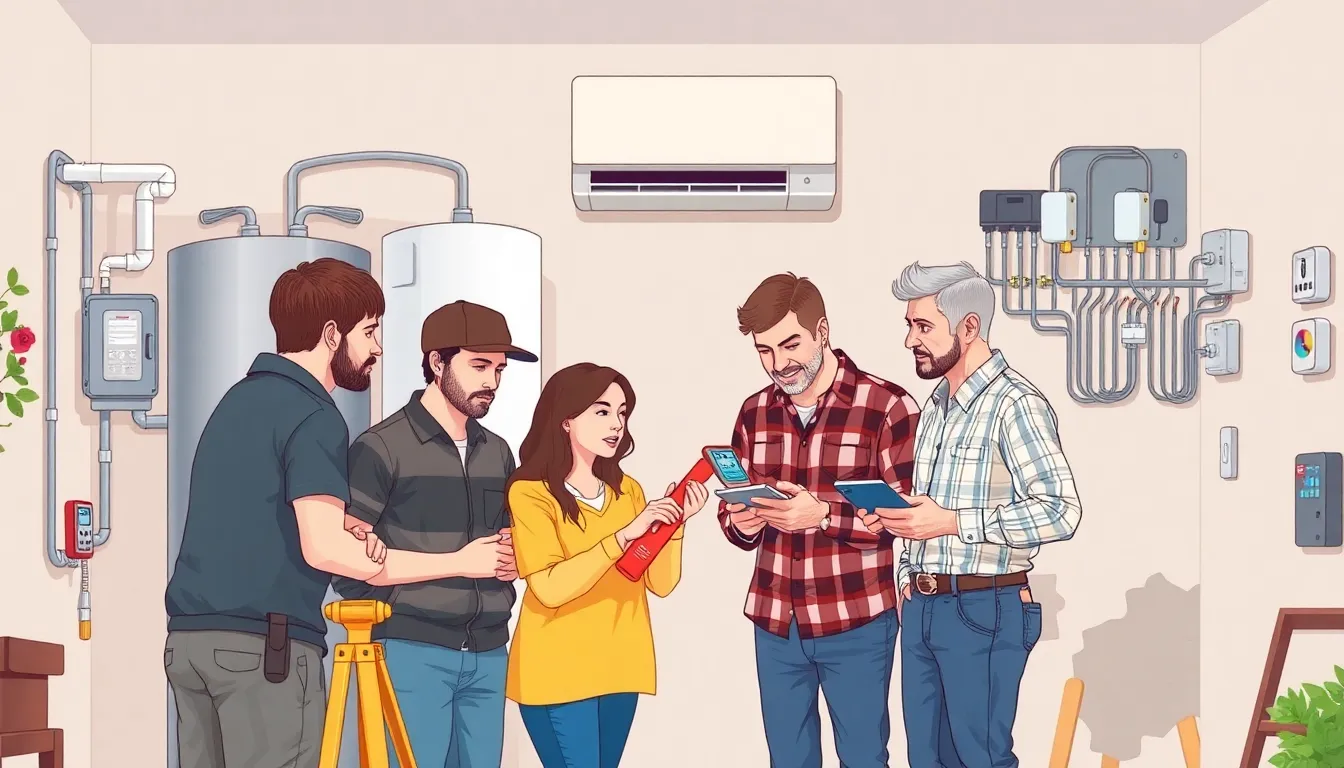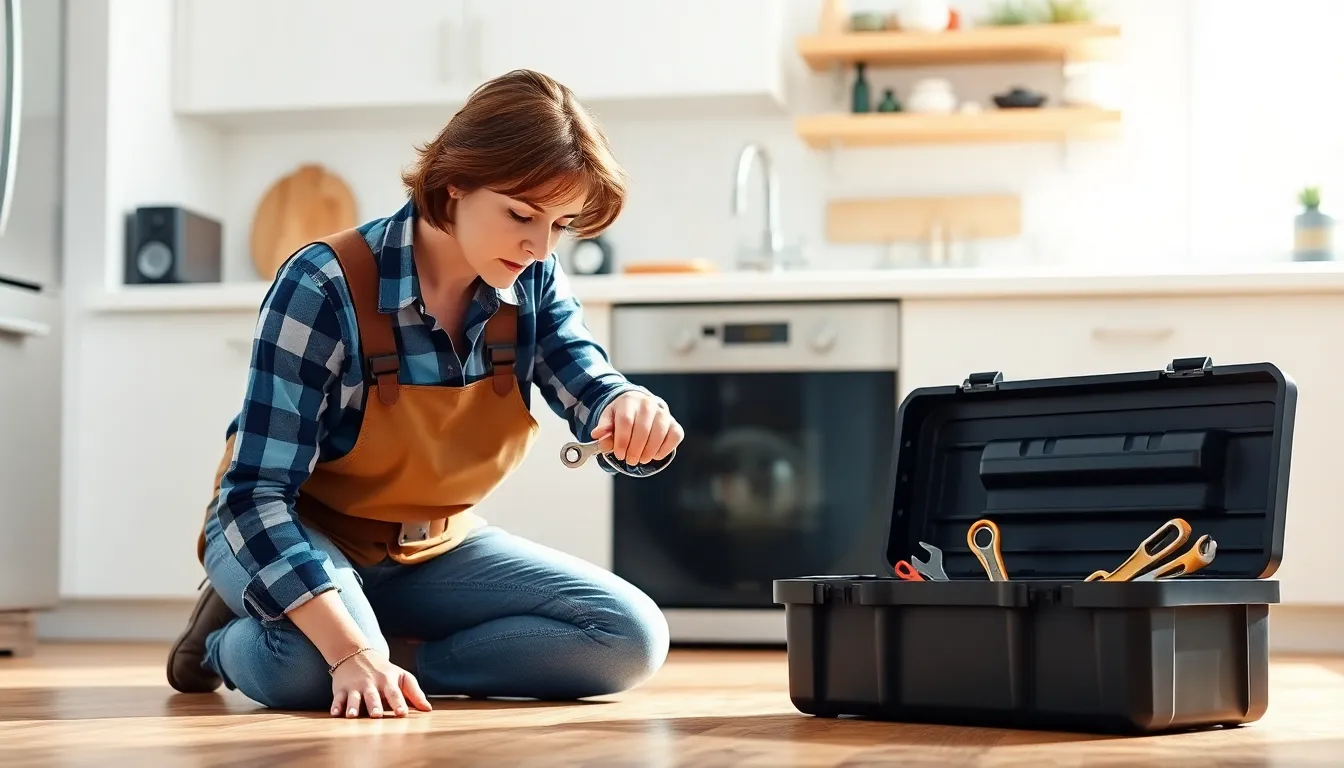Repair maintenance might not sound like the most thrilling topic, but it’s the unsung hero of homeownership. Imagine waking up to a leaky faucet or a squeaky door—it’s like a horror movie where the villain is your own house. But fear not! With a little know-how and some proactive maintenance, homeowners can turn potential disasters into minor inconveniences.
Table of Contents
ToggleUnderstanding Repair Maintenance
Repair maintenance involves routine tasks aimed at preserving and improving the condition of a home. This process includes both preventative measures and necessary repairs that arise over time.
Definition of Repair Maintenance
Repair maintenance refers to the activities undertaken to fix and maintain a home’s systems and structures. It encompasses tasks like plumbing fixes, electrical adjustments, and appliance servicing. Homeowners can categorize these activities into two main types: preventative maintenance that seeks to prevent issues before they arise and reactive maintenance that addresses problems post-occurrence. Effective repair maintenance enhances functionality and prolongs the lifespan of various household components.
Importance of Regular Maintenance
Regular maintenance proves vital for sustaining a home’s value. Addressing minor issues promptly prevents them from escalating into significant problems, which can incur higher costs. Statistical data suggests homeowners could save up to 30% on costly repairs by adhering to scheduled maintenance. Additionally, routine checks maintain safety and efficiency, ensuring systems operate correctly. Investing time and resources into regular repair maintenance ultimately leads to a more comfortable living environment and enhances property longevity.
Types of Repair Maintenance

Repair maintenance can be classified into different categories, each serving a unique purpose in maintaining a home’s integrity and value. Understanding these types helps homeowners make informed decisions.
Corrective Maintenance
Corrective maintenance focuses on repairing problems that have already occurred. When a system fails or shows signs of wear, this type of maintenance comes into play. For example, fixing a broken water heater or addressing a malfunctioning air conditioning unit involves corrective maintenance. Timely attention to these issues prevents further damage and additional costs. Homeowners often find that addressing small problems immediately can save them from larger, more expensive repairs later.
Preventive Maintenance
Preventive maintenance seeks to avoid problems before they arise. Routine inspections and servicing ensure systems function efficiently. Changing air filters, cleaning gutters, and checking smoke detectors are examples of preventive maintenance tasks. Performing these activities regularly significantly reduces the risk of unexpected failures. Homeowners who commit to a scheduled maintenance plan often experience less stress and lower repair costs, with studies indicating they can save up to 30% on major repairs.
Predictive Maintenance
Predictive maintenance involves monitoring systems to predict potential failures. Technological advancements enable homeowners to utilize sensors and software for this purpose. By assessing data trends on equipment performance, predictive maintenance identifies when maintenance actions are necessary. For instance, utilizing thermography to spot overheating electrical components signals potential issues. This proactive approach can extend the lifespan of home systems and mitigate unexpected breakdowns. Ultimately, predictive maintenance fosters a data-driven strategy that promotes efficiency and reliability.
The Repair Maintenance Process
The repair maintenance process involves several essential steps ensuring a home’s systems remain functional and efficient. By prioritizing regular and effective maintenance, homeowners can avert significant issues down the road.
Assessment of Equipment
Equipment assessment focuses on evaluating the condition of home systems, such as HVAC, plumbing, and electrical systems. Homeowners should perform regular checks to identify signs of wear or minor failures before they escalate. Inspections can reveal issues like leaks, unusual noises, or other anomalies. Utilizing a thorough checklist during these assessments guarantees nothing goes overlooked. Depending on the findings, it may warrant immediate repairs or routine servicing to maintain optimal performance.
Planning and Scheduling Repairs
Planning and scheduling repairs involve creating a maintenance calendar that outlines tasks and timelines for each system’s upkeep. Homeowners can prioritize urgent repairs based on their assessments, placing more critical issues at the top of their list. Scheduling routine maintenance, such as seasonal HVAC inspections or gutter cleaning, reinforces the proactive approach. Keeping a well-organized schedule allows for timely responses to emerging problems, ultimately ensuring that the home’s systems continue to operate safely and effectively. This strategic planning aids in reducing long-term repair costs and enhances overall property longevity.
Best Practices for Effective Repair Maintenance
Effective repair maintenance requires strategic planning and execution. Implementing best practices helps prolong the life of home systems and enhances overall safety.
Documenting Maintenance Activities
Documenting maintenance activities proves essential in maintaining a home. Keeping detailed records allows homeowners to track past repairs and identify patterns. Notes on completed tasks, dates, and service providers streamline future maintenance. This documentation aids warranty management and ensures homeowners stay informed about the property’s maintenance history. Regular updates promote accountability, simplifying the scheduling of upcoming repairs and inspections.
Utilizing Technology and Tools
Utilizing technology and tools significantly enhances the maintenance process. Smart home devices monitor system performance, alerting homeowners to potential issues before they escalate. Maintenance management apps help organize tasks, schedule reminders, and track activities efficiently. Homeowners can access digital checklists to ensure they cover all maintenance essentials during inspections. Investing in quality tools streamlines DIY repairs and promotes accurate problem-solving, reducing reliance on professional services when possible.
Repair maintenance is an essential aspect of homeownership that shouldn’t be overlooked. By prioritizing regular upkeep and understanding the different types of maintenance, homeowners can effectively protect their investments. Implementing a proactive approach not only minimizes stress but also saves money in the long run.
Utilizing technology and documenting maintenance activities empowers homeowners to stay organized and informed. This strategic planning enhances the safety and efficiency of home systems. Ultimately, investing in repair maintenance leads to a more comfortable living environment and ensures long-term property value. Embracing these practices transforms potential challenges into manageable tasks, making homeownership a more rewarding experience.



